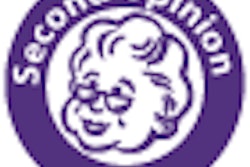The negative impact of the Deficit Reduction Act (DRA) of 2005 has been far worse for radiologists than for other specialists who also perform medical imaging in their own offices, according to a study published in the September issue of the Journal of the American College of Radiology.
And the legislation may have actually increased the prevalence of physician self-referral: Nonradiologists appear to have offset the DRA's effects by referring more patients to their own practices, according to Dr. David Levin and colleagues at Thomas Jefferson University Hospital in Philadelphia (JACR, September 2009, Vol. 6:9, pp. 620-625).
Levin's team compared the effects of the DRA on in-office MRI and CT procedure volumes and payments of radiologists and nonradiologist physicians by evaluating data from the Medicare Part B Physician/Supplier Procedure Summaries from 2002 to 2007.
"I expected the DRA to have the same chilling effect on nonradiologists that it did on radiologists -- that nonradiologists would have cut back, sold some of their scanners, or decided to avoid getting into imaging at all," Levin told AuntMinnie.com. "But that's not what happened. In fact, imaging volume in nonradiology practices went up."
For MRI, procedure volume at radiologists' private offices increased by 8.4% yearly from 2002 to 2006, but decreased by 2% in 2007, the first year the DRA was in effect. However, nonradiologists' office volume increased by 24.8% yearly from 2002 to 2006, and then increased by another 7.6% in 2007. Office MRI payments to radiologists increased by 11.2% yearly from 2002 to 2006 and dropped by 30.1% in 2007, while nonradiologists' office MRI payments increased by 25.7% yearly from 2002 to 2006 and dropped by 23.5% in 2007.
Medicare MRI volume trends from 2002 through 2007
|
||||||||||||||||||||||||
| IDTF = independent diagnostic testing facility. The growth rate per year shown in the fourth column is the compound annual growth rate between 2002 and 2006. Procedure volumes refer to studies performed in private offices. All tables courtesy of the American College of Radiology. |
Medicare MRI payment trends from 2002 through 2007
|
||||||||||||||||||||||||
| The growth rate per year shown in the fourth column is the compound annual growth rate between 2002 and 2006. Payments are those received for studies performed in private offices. |
How did the DRA cause radiologists' private-office MRI volume to dip, while nonradiologists' volume increased?
"What may have happened after 2007 is that radiologists stopped opening private offices or, in some cases, closed their offices," Levin said. "The DRA has had the effect of pushing radiologists back to the hospital."
As for CT, radiologists' private-office volume increased by 11.2% yearly from 2002 to 2006, but then increased by only 2.9% in 2007. Nonradiologists' office CT volume, in turn, increased by 31.8% yearly between 2002 and 2006 and increased by 18.1% in 2007. Office CT payments to radiologists increased by 13.4% yearly between 2002 and 2006 and dropped by 5.7% in 2007. Meanwhile, nonradiologists' office CT payments increased by 34.9% yearly between 2002 an 2006 and increased by 8.3% in 2007.
Medicare CT volume trends from 2002 through 2007
|
||||||||||||||||||||||||
| The growth rate per year shown in the fourth column is the compound annual growth rate between 2002 and 2006. Procedure volumes refer to studies performed in private offices. |
Medicare CT payment trends from 2002 through 2007
|
||||||||||||||||||||||||
| The growth rate per year shown in the fourth column is the compound annual growth rate between 2002 and 2006. Payments are those received for studies performed in private offices. |
"Nonradiologists with their own in-office MRI or CT units, or those who lease time on such units, are in a position to drive demand by referring more of their own patients for scans," the authors wrote. "Radiologists do not have this option."
The DRA has been successful, the team noted, in that it accomplished what policymakers desired -- to curb the volume and, therefore, payments of advanced imaging scans referred to radiologists. But it has done nothing to curtail self-referral; in fact, it has caused the practice to flourish, according to Levin and colleagues, who wrote that the changes from 2006 to 2007 demonstrated in the study are the result of increasing self-referral to existing scanners.
"How do you make up loss in revenue per case? You perform more exams," he said.
By Kate Madden Yee
AuntMinnie.com staff writer
August 28, 2009
Related Reading
DRA has affected radiologists' salaries, study finds, June 4, 2009
The DRA and PACS: One hospital's story, April 14, 2009
GAO: DRA cut 2007 imaging expenses by $1.7 billion, September 26, 2008
Want to survive in a post-DRA world? Start talking, March 4, 2008
ACR: Help stop another DRA, November 12, 2007
Copyright © 2009 AuntMinnie.com



















